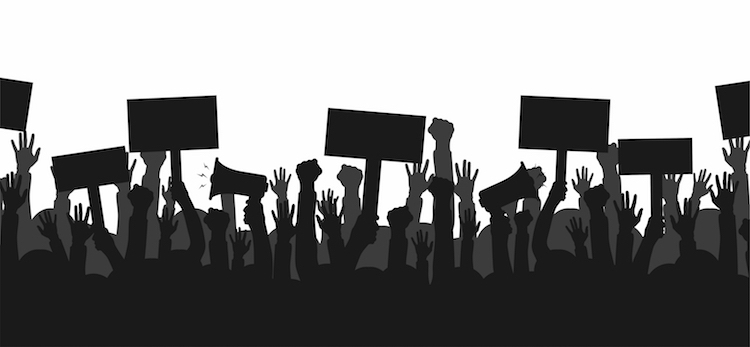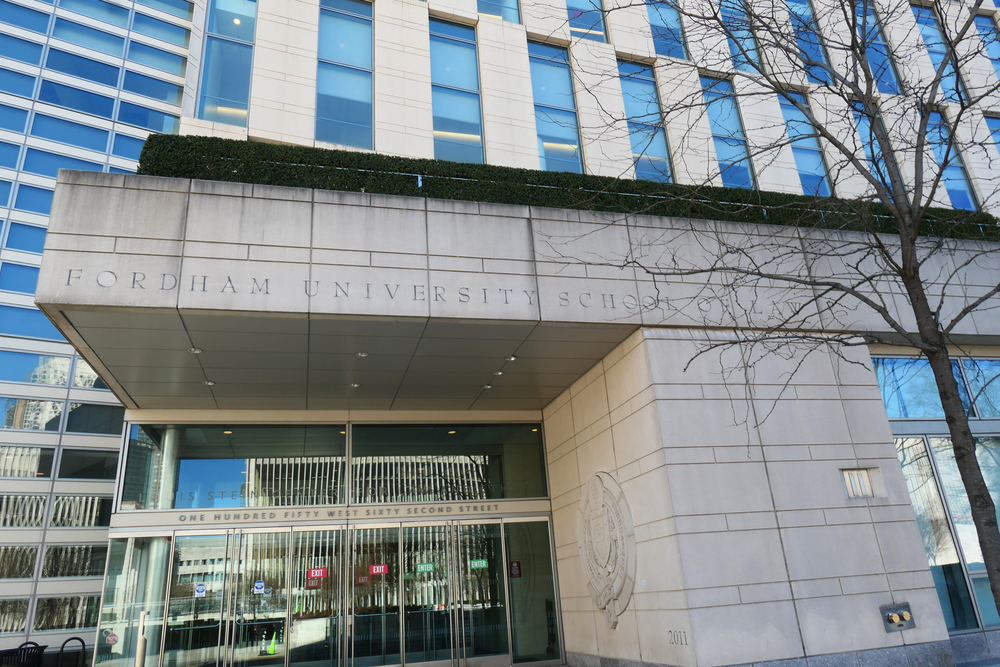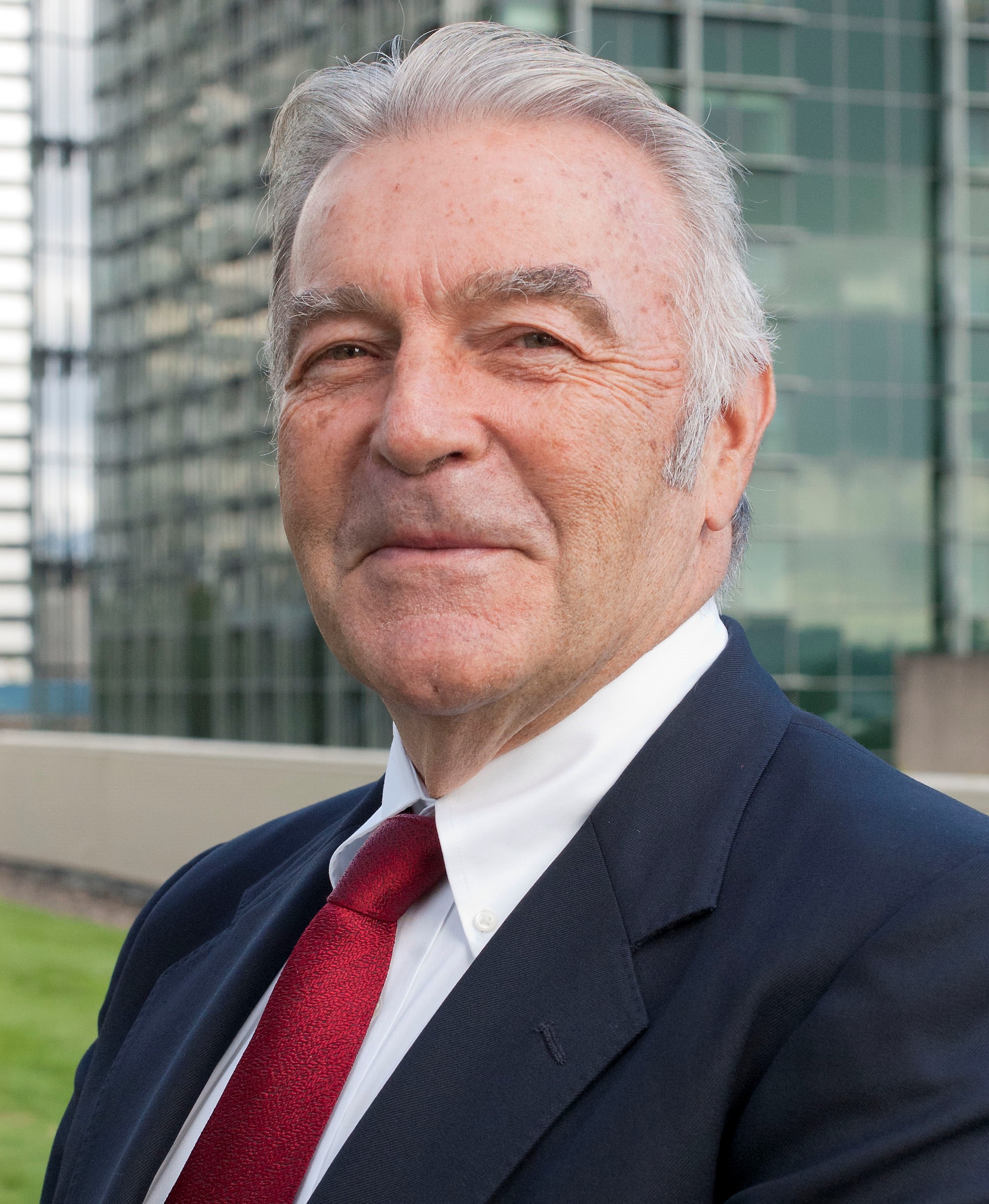Protesters' legal rights are up for debate

The First Amendment offers broad protection to freedom of association and expression as long as the forum is in a public space, says Irina Tsukerman, a national security and human rights lawyer and president of Scarab Rising, a geopolitical risk strategic advisory in New York. (Image from Shutterstock)
As protests continue to unfold across the country, attorneys are grappling with what rights these demonstrators do and do not have.
These last few years have seen significant unrest—from police brutality remonstrations to pro-Palestinian demonstrators—leading to hundreds of arrests and ongoing debates: What’s the difference between free speech and hate speech? Do protesters have the right to protest anywhere? When do demonstrations cross the line?
Much of the protesting debates center around free speech and the right—or lack of—to say whatever you want during protests.
The First Amendment offers broad protection to freedom of association and expression as long as the forum is in a public space, says Irina Tsukerman, a national security and human rights lawyer and president of Scarab Rising, a geopolitical risk strategic advisory in New York. This amendment also protects so-called “hate speech,” unless the hate speech is directly threatening violence or if it incites criminal activity. States also have individual hate speech laws, but under the First Amendment overall, you can’t be prosecuted for your beliefs.
“People may be offended or upset about beliefs that are untrue or based upon false stereotypes, but it is not a crime to express offensive beliefs or to join with others who share such views,” Tsukerman says.
There is a line though: Protesters can say what they want, as long as it’s not harassing, bullying or inciting violence. That’s where the laws get a little confusing—and why so many people are attempting to reexamine arrests and protest shutdowns.
The questions become, what constitutes discriminatory harassment—and what can be done to protesters who may be teetering the line?
There are different laws for public and private institutions. Private establishments aren’t bound by the First Amendment, so they can make their own decisions with regard to the protests. For example, Northwestern University chooses to not allow weekday demonstrations until the late afternoon (the exact time differs with regard to location); and they don’t allow any flyers or postings unless they’re affixed to lampposts or outdoor bulletin boards. Tents and other temporary structures are also prohibited. After some Northwestern students organized a tent encampment on campus, the university promptly attempted to remove the structures.
“The goal,” said legal scholar and Northwestern University President Michael Schill in a statement, “is to balance the right to peacefully demonstrate with our goal to protect our community, to avoid disruptions to instruction, and to ensure University operations can continue unabated. … Any violation of the rules … could lead to disciplinary actions such as suspension or expulsion and possibly criminal sanctions.”
At public universities, however, similar rules apply, as protests there can be restricted if they interfere with the ordinary functioning of the university, such as by blocking access to buildings or making noise that interrupts classes.
“The primary issue at the moment seems to me to be less focused on the message being communicated than on the methods being used—most notably taking over the public spaces of the university in ways that interfere with its ordinary functioning,” says Geoffrey Stone, a law professor at the University of Chicago and author of several books on the topic, including The Free Speech Century.
In addition to the methods used to protest, many of the words being thrown around are threatening as well, such as “Kill the Jews,” which was allegedly a chant at Columbia University, according to numerous news outlets.
That’s why so many protesters are being arrested at the moment, Tsukerman says. Public and private colleges have an obligation to break up any activity that poses danger to students; in fact, she says, there are already legal challenges filed by Jewish students over the failure of the universities to create a safe environment and to prevent physical violence, intimidation and harassment.
“In general, the universities will not push for the end of protests if this is a mere issue of personal insults or angry or even violent speech but are more likely to disrupt if there is a good reason to believe that the speech will lead to targeted violence or other mob action,” Tsukerman says.
Gerard Filitti, senior counsel with the Lawfare Project, a nonprofit that is representing a number of students concerned about antisemitism in connection with some of the protests, says the majority of the current protests regarding Gaza employ antisemitic tropes, targeting Jewish people with hatred and vitriol, which is bullying and is therefore illegal. In recent weeks, Filitti says, this vitriol has escalated into actual violence.
One protest pitting pro-Palestinian supporters against pro-Israel counter-protesters on the University of California campus recently turned into a shouting match, which progressed quickly into violence and a pro-Israel protester ended up on the ground with visible injuries. The UCLA police department arrived in riot gear, but no immediate arrests were made.
Mary Osaka, the UCLA vice chancellor, released a statement reflecting the disappointment they felt for the lack of regard for humanity. “We are dismayed that certain individuals instead chose to jeopardize the physical safety of the community,” she said.
Still, the American Civil Liberties Union wrote a letter to leaders at public and private universities saying that they cannot sacrifice principles of academic freedom, which are protected on campus even when it relates to “deeply offensive” content. All universities should protect students from “targeted discriminatory harassment and violence,” the ACLU said.
The issue is what constitutes targeted discriminatory harassment and violence.
It’s all about social constructs: There isn’t an exception under the First Amendment for hate speech —evidenced by the Supreme Court’s ruling in 2011 protecting the Westboro Baptist Church’s right to picket against military funerals and gay rights. In this case, it was shown that the government can’t restrict speech or impose liability for speech even if that speech is viewed as offensive or outrageous, says Michael Beylkin, a Denver-based partner with Zansberg Beylkin.
But this right to total free speech appears to be very flexible, according to Xavier de Janon, the Charlotte, North Carolina-based director of mass defense at the National Lawyer’s Guild. De Janon says students have been gathering in public spaces within their university campuses to make reasonable demands on their schools, and they’re being unfairly treated.
“These encampments have faced extreme and extraordinary violence from universities and law enforcement, unlike any recent student-initiated justice movement,” he says, comparing the pro-Palestinian protests with the #MeToo movement and the gun violence demonstrators. From a constitutional perspective, de Janon says, it’s unlawful for the government to selectively target speech based on content.



